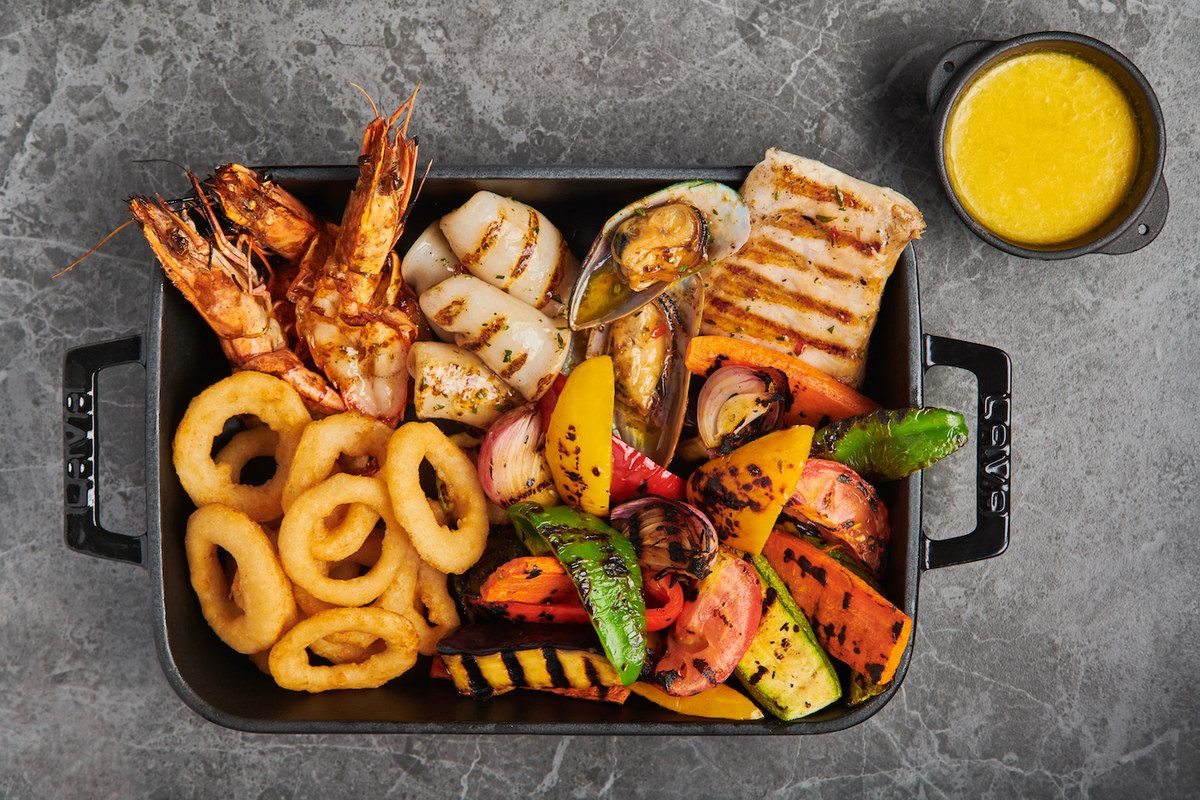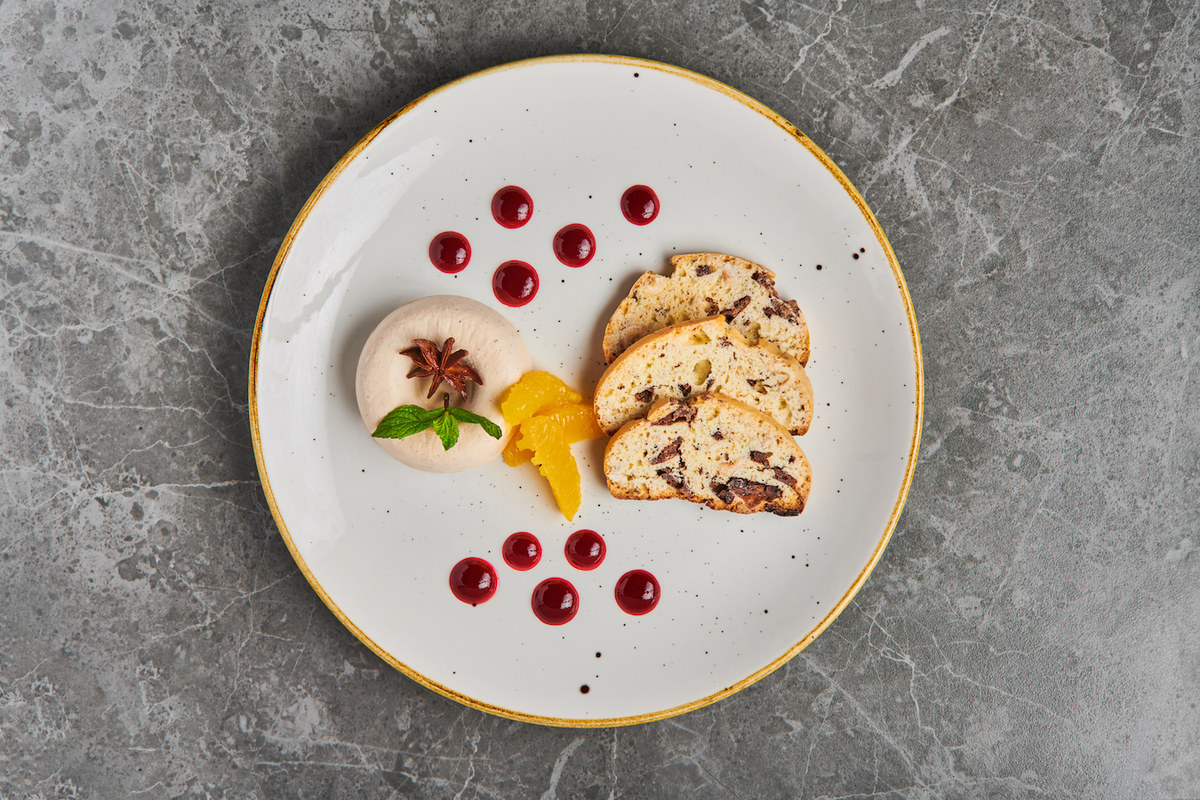DUBAI: South African chef Justin Pillay has been in the hospitality industry for 25 years, and has worked in several different countries, including Nigeria, Sierra Leone and Germany. In the latter, he briefly worked at the three-Michelin-star restaurant Le Vendôme.
He is now in Saudi Arabia, where he is the executive chef at Radisson Blu Hotel Riyadh Convention and Exhibition Centre. And, Pillay tells Arab News, he can see himself staying in the Kingdom for a long time.

(Supplied)
“I really am enjoying Saudi Arabia. I love the speed at which the country is growing and developing. It’s an exceptionally exciting time when we’re able to push boundaries because we have access to some of the most amazing produce from all around the world as well as the incredible local produce,” he says.
Here, Pillay discusses his early mistakes, his top tips for amateurs, and why he loves a noodle stir-fry.
Q: When you started, what was the most common mistake you made?
A: It would be to do with the temperatures and textures of food. Because you are in a rush to get everything right, you don’t quite understand when things should be added, so you would generally undercook or overcook dishes.

(Supplied)
What’s your top tip for amateur chefs cooking at home?
Have as much fun as you can and be creative. Don’t be afraid to experiment with flavors and textures. That’s how you will learn the most. Take risks. You’re going to learn from it even if it doesn’t quite come out right.
There are some practical things too, like, try and make sure you have a good quality chef’s knife when you’re cooking. And use the right size cooking equipment.
Finally, season your food — and taste it — as you go along.
What one ingredient can instantly improve any dish?
Ingredients like lemon juice, lime and vinegar are key because they add to the balance of flavor. Interestingly, if something tastes a bit acidic you can actually offset that with vinegar with a small combination of sugar. And, of course, salt, because it does enhance natural flavoring. I prefer Maldon salt because it’s got a natural sweetness.
When you go out to eat, do you find yourself critiquing the food? What’s the most common issue that you find in other restaurants?
I think it’s a bit difficult not to critique as a professional chef because you’re often comparing yourself to others, so you genuinely want to see whether you’re keeping up or whether you have room for improvement. So, critiquing doesn’t necessarily mean, ‘That’s a bad dish.’ A critique can be good as well. Wherever you go, there are some basics: The food should be clean; your table should be clean; the staff should be attentive. It’s not just about the food when you go out anymore, because there are so many options. I think we’re all looking for experiences, more than just an evening out.

(Supplied)
What’s your favorite cuisine?
I generally enjoy Asian-style cuisine: Thai food, Japanese food, Chinese food… I just enjoy the freshness of the cooking, the range of ingredients, and the flavor that you can get out of them. Even simple dishes have very clean and bold flavors.
What’s your go-to dish if you have to cook something quickly at home?
A noodle stir-fry with chicken or prawns — preferably prawns. It’s easy, and gives you maximum freshness because it’s a very quick cooking method. When they speak about ‘umami’ flavor in Japanese and Chinese cooking, which you get generally from the soy sauce and salty ingredients, I like that flavor profile. And I think it’s the quickest complete dish that you can get together with that flavor in it.
What customer behavior most annoys you?
Number one is when people have a complaint and choose not to give you feedback on the day because they don’t want to engage with you to give you a chance to fix it. And then you end up seeing comments online. And then I’d say number two comes down to dietary requests. I completely understand medical dietary requests, and I understand lifestyle dietary requests. However, it does get challenging on the day if you’re not aware of someone coming in with dietary requests, and you have to alter a very well-planned dish. Because you have to change the dish completely from what we intended the guest to experience. Menu creation and recipe creation take hours and hours of training and practicing.

(Supplied)
As a head chef, are you a disciplinarian? Or are you quite laid-back?
You learn over the years what works and what doesn’t work, so I’ve become very laidback in the kitchen. My approach is firm but fair. I do expect hard work to be put in and high-quality food to be produced. That’s demanding. But I do understand that mistakes will happen. Shouting in a kitchen doesn’t bring a team anything because you’re not going to get growth. Being approachable is critical.
Chef Justin’s potato and spinach paratha
INGREDIENTS: 500g flour, sieved; 250g braised yellow potato; 100g fried spinach; 35g sunflower oil; 75g butter; salt to taste; boiling water as needed to soften dough
INSTRUCTIONS:
1. Place the butter, oil, salt and flour into a bowl.
2. Slowly mix in boiling water until you have a smooth, well-mixed dough.
3. Knead the dough and roll it into 50g balls, then flatten. Press the spinach potato filling into the centers, then close and roll into discs.
4. Fry, brushing with melted butter, until lightly brown and puffy on both sides.
5. Serve. (But this also keeps well in the freezer.)












